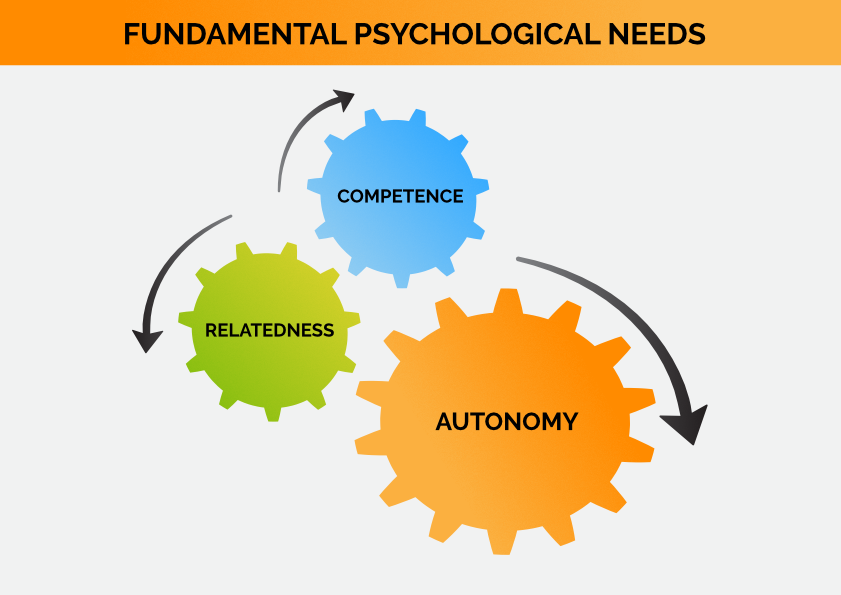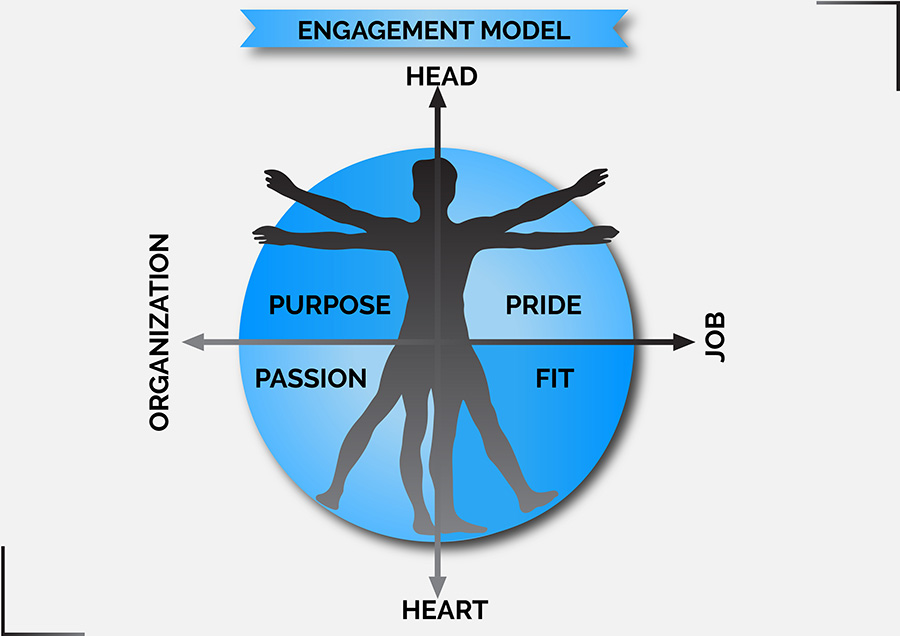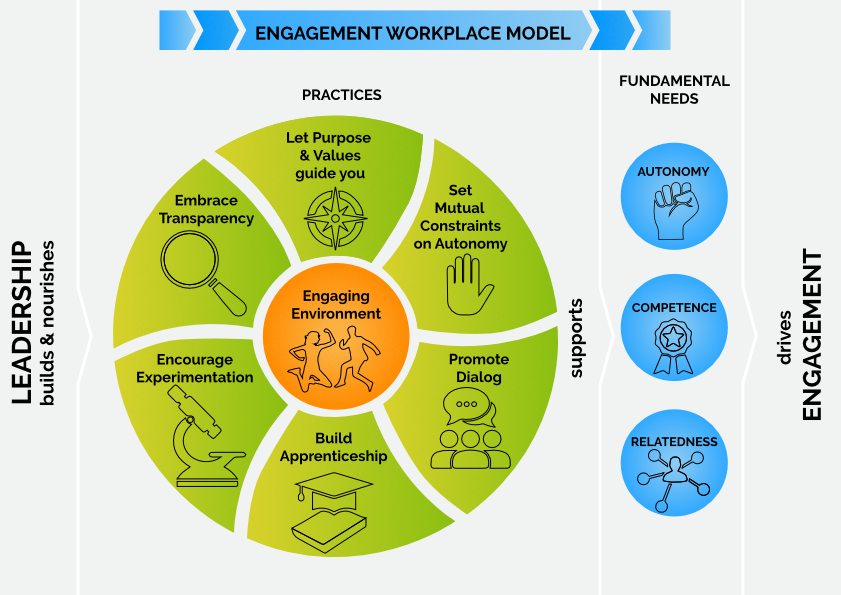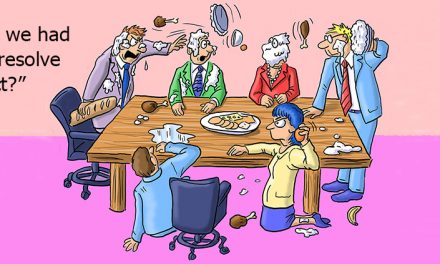[series_meta]
Over two-thirds of employees worldwide are not engaged. At the same time, the subjects ranks high on the priority lists of CEOs worldwide. So, while organizations feel that employee engagement matters, they are not very successful in achieving it. Yet in this fast changing world of high complexity and hyper-competition it is a highly engaged workforce that makes the difference between a struggle for relevance and a thriving future.
In part I of this this article we informed you on the current status of employee engagement, and it’s significance. In this part II we aregoing to shift gears: we will take a deep dive in how engagement actually works, and how to develop an environment for your organization to drive engagement to an all-time high.
This article is part of a series
[series_post_list_box]
What can you expect from this article?
- The facts on the state of engagement in organizations worldwide
- What is engagement exactly?
- Why do traditional HR engagement programs not work?
- How to significantly improve engagement?
Universal motivators: Competence, Autonomy, Relatedness
People are not the same. They have different personalities. Different personal goals. And different motivations in life. But it turns out there are three fundamental psychological needs1 that everyone has: Autonomy, Competence, Relatedness.
We define autonomy as the need to self-regulate ones’s experiences and actions. The most important aspect is that someone’s behavior and authentic interests and values are aligned. If something stands in the way of congruence between our behavior and values, then we perceive this negatively. Autonomy is a special need because it acts as a vehicle through which the other psychological needs are actualized.
Competence is the need to be good at something. Whether it when playing a video game at home, or the scientists who feels the need to master his field. People experience being effective as satisfying and enjoying. There is a connection with autonomy because people must feel ownership of the activities they are successful in, in order to truly feel competent and therefore motivated.
Relatedness means feeling socially connected. This is a broad area: feeling cared for and caring for is part of it. Belonging to a group and feeling significant are part of relatedness too. In organizations people experience relatedness when they feel able to contribute to their team or the organization. For true self-esteem, people must have the perception that others will care for them unconditionally and that others accept them for who they are, according to Ryan and Deci.
These three psychological needs are fundamental. All other motivators are not. A sportsman does not need power for example to master his sport and feel whole. They are also interconnected. If one of them is missing or lacking, it will influence the person’s well-being. People will react differently: some will fall into a more passive mode, and others will try to compensate for what is missing, which is surfacing as greed, power, or aggression.
The smell of the place
The late Professor Sumantra Ghoshal coined the phrase ‘The smell of the place’ as to the ambiance, and culture a workplace reflects at first glance. He makes a beautiful comparison between the ambiance of his hometown Calcutta in the summer when there is a very high temperature and humidity, and the forest of Fontainebleau in France in spring. The summer in Calcutta makes him feel tired while spring in Fontainebleau makes him feel revitalized. He then continuous that many organizations create a corporate environment that smells like downtown Calcutta in the summer and then expect people to be pro-active and take initiative. The environment smells like constraint, compliance, control and contract. These are environments that do not support the three basic psychological needs of autonomy, competence, and relatedness that drive engagement.
You cannot have faith in people unless you take action to improve and develop them.
Manage the system, not the people
If we cannot motivate people directly, what can we do? According to Ryan and Deci autonomous motivation depends on satisfaction of the three basic psychological needs2. So, the answer is to stop managing people directly but instead create and nurture a system, an environment, that has another smell to it: that provides the conditions for autonomy, competence, and relatedness. This is the new job of management and leaders.
When we talk about a system, we mean a broad definition of the work environment: from physical workspace to hiring, onboarding, and appraisal systems; design of the job, autonomy over one’s job, rules and regulations, how people can gain necessary skills, norms and values, salary and compensation, etc.
The environment we create must support the three basic physiological needs: It must support autonomy instead of being controlling and commanding. It must also support competence by not being overly challenging. People must be able to be effective and to complete their jobs. They also need to be able to master the skills needed to be successful. And the environment must support relatedness in being specific how one can contribute to higher organizational goals. This also entails a culture of dialog that accepts and respects everybody’s position and opinions rather than a culture of discussion to convince others of having superior ideas.
I hope it is clear by now that building such environment relies on intrinsic motivation, rather than extrinsic motivation. Traditionally, many organizations rely on creating emotional and economic pressure to drive performance3. In the article How to motivate front-line workers, Lindsay McGregor and Neel Doshi explain how they helped a US national retail organization boost their front-line workers performance. One aspect was the elimination of high-pressure motivation tactics, including sales commissions, high-pressure conversations, sales-based promotion criteria, and public shaming. We explained to leaders that great leadership isn’t about pressuring people to do their work. Rather, it is about inspiring your people to want to do their work well.
Engagement model
The Conference Board4 provides a useful working model for engagement that we can use to build and nurture the system.
he model distinguishes four dimensions: From Head to Heart; and from Job to Organization. Some practices focus on the organization while others focus on the jobs people perform. And some practices deal with the emotional component of engagement, the heart, while others focus on the cognitive side: the head, or mind. This leads to four quadrants, all of which need high levels of engagement for employees to be truly engaged:
Purpose
How does the organization create a sense of purpose? And what does it do to allow employees to align their personal goals and values to the purpose of the organization?
Pride
What does the organization do to enable a sense of pride concerning the job and one’s contribution to the purpose?
Fit
Passion
There is a strong relation between the four quadrants and the three fundamental psychological needs. A sense of purpose is necessary for autonomy to work. Combine the two and add competence in the mix and you get proactive employees that are willing and capable of deciding themselves. Purpose without autonomy means just a dictated higher goal that is disconnected with the front-line workers. Autonomy without a purpose can lead to chaos and selfishness as people might use their newly gained powers for their own personal benefit. Of course, when people work together for a shared purpose this also supports the basic need of relatedness. Pride is something you feel when you understand how you are contributing, while you have the autonomy to decide how to do your work, and the competence to finish the task. We are passionate about the things we are good at (competence) and that matter to the organization we belong to (relatedness). And finally, the fit of one’s job is determined in part by the autonomy to choose how to do your work, the competence or mastery of the necessary skills, and the relatedness of our jobs to that of our peers.
To summarize, management’s new job is to create and nourish a system, or environment, that supports the basic psychological needs of autonomy, competence, and relatedness, by providing practices that satisfy engagement in purpose, pride, passion, and fit. This entails both designing new practices, and structurally getting rid of any existing ones that stand in the way of supporting autonomy, competence, and relatedness.
Build an engaging workplace
Some common steps in creating an environment that supports engagement are identified below.

Let purpose & values guide you
We have mentioned purpose a couple of times already. A strong purpose is not only a crucial ingredient of an engaged workforce, it is crucial for the modern adaptive organization as a whole. The ingredients for a good purpose is a subject of a next article, but for it to spur engagement it must have an outward focus, defining what we do for our customers and the society as a whole, rather than what we do for ourselves. This enables employees to identify themselves with customers.
A set of core values demonstrate desired behavior. Together with the purpose they help enable autonomy. A purpose is like a North Star, it provides long-term guidance how to contribute and if our personal goals align with those of the organization. Values support daily decision-making: they function as a checklist that employees can use when they are making daily decisions. It is an important enabler for autonomy because they provide constraints to the autonomy, and however paradoxical it may sound, without constraints any empowerment program will lead nowhere. Why? Because in an organization that previously adopted a hierarchical command & control management style people will not be counting their chickens yet if you suddenly give total freedom. They will probably wait and see if management is serious.
One thing to consider when you start out with a set of core values: you better be serious about it. You need to ask yourself whether you are willing to hold on to the values consistently, even over performance. If not, your set of values will probably go no further than a copper plaque on the wall, or some fancy designed motivational posters. You lose all credibility the first time you let somebody of the hook that structurally shows behavior that is not aligned to the core values, because ‘he performs so well’. Values will need to be incorporated in hiring, on-boarding, and appraisal processes.

SET MUTUAL CONSTRAINTS ON AUTONOMY
We discussed above why autonomy needs constraints to succeed, and how a set of core values help to set constraints. Another useful tool is the use of the Management 3.0 practice of delegation levels and a delegation board. An important eyeopener of this tool is the realization that delegation, providing autonomy, is not a on/off concept. There are multiple levels of delegation. Management 3.0 defines seven. Appreciating multiple levels of delegation makes it more acceptable for a manager to delegate some decisions, and for employees to accept the responsibility. The idea is to make a list of all decision areas together, and then for each area to agree on a delegation level. There might be areas where a manager feels he or she needs to be in more control for now. And there might also be decisions that a manager feels he can fully delegate. But it goes the other way around as well: A manager might want to delegate something further than the employee feels comfortable with. It is important to agree on what feels comfortable and responsible for now, and make this transparent on a delegation board so it is clear for everyone what to expect from whom. Occasionally the team and manager gather to discuss the current levels and discuss how to move more decision areas to higher delegation levels.

EMBRACE TRANSPARENCY
Transparency is an important driver to engagement. By keeping everybody informed we directly support autonomy, relatedness, and competence. By receiving all information, employees can make the right decisions. By tearing down the old walls of ‘information is power’ we drive relatedness. And by being transparent about direction and progress, we allow employees to gain necessary skills to contribute fully.
Internal intranet systems, town hall meetings, open-door policies, etc can easily support transparency. It is much more a mental challenge of trust and vulnerability.

ENCOURAGE EXPERIMENTATION
I have said it before: In a complex world you cannot predict and control your future; you need to discover it. A culture of experimenting is a much better tool for this than traditional forecasting or big upfront plans. But they also have a huge effect on engagement. By allowing employees to conduct experiments in the form of well-defined hypotheses (”We think by implementing change X, we get result Y, which we will measure by indicator Z”) they contribute in improving work practices (autonomy), work together and build a team (relatedness), and gain new and necessary skills in the process (competence).
It can be as simple as having an idea board on the wall on which experiments are tracked. At regular times the team gathers in front of the board to discuss new experiments and progress of running ones. As a manager, you just provide the wall space, and the time to work on experiments. You don’t have to define the experiments. They do. Just implement one simple rule, stating all experiments must be below the waterline in terms of risk, meaning they cannot seriously harm the company, and then get out of the way.

SUPPORT COMPETENCE BY BUILDING A SYSTEM OF APPRENTICESHIP
A practice that supports all three fundamental needs is an apprenticeship, a system where the employees of a team or department decide for themselves which skills they need, who adopts skills and then coach each-other in building necessary skills.
The first step is to allow the team to assess for themselves what skills they need to be successful. These can both be hard skills and soft skills, and required knowledge.
The second step is to decide what levels of expertise are required per skill, using a simple level system, modeled after the medieval trade guilds, of a master, journeyman, and apprentice. Simply determine how many masters you need for each skill, how many journeymen, and how many apprentices.
The next step is to determine which of the required skills are already present in the team, and which are lacking. Then people can adopt skills in which they wish to grow, respecting the required versus present skill levels.
Masters coach apprentices on their quest to become at least journeymen. As a manager, you support the team in the total process of assessing required skills and learning to improve.

PROMOTE DIALOG
Another aspect to look at is communication. Is communication from manager to employee supportive or instructive? Is basic communication aimed at collaboration or getting what you want? Specifically, we want a system based on dialog instead of discussion. That might need clarification. What I don’t mean is that people cannot argue and always need to agree. As a matter of fact, a good team thrives when they master dealing with conflict instead of covering it up. But communication needs to be targeted at finding the best solution for a problem together whereas in many corporate cultures the norm is to convince each-other you have the best idea. Discussion aimed at convincing means we either go with your solution or mine, but not necessarily the best one. We are not listening to each-other; we are not learning from each-others point of view. Open dialog means we actually listen to and try to understand each-other’s point of view and reasoning, which might make us rethink our own. In doing so we can collaboratively find new and better ideas that none of us would have come up with individually.
Conclusion
Employee engagement is shockingly low worldwide. Although hard to calculate exactly, it is easy to see how it is costing organizations a tremendous amount of money in lost opportunity costs, dissatisfied customers because of poor customer service, employee turnover, and mental healthcare.
Improving engagement is high on the agenda of CEOs but until they are prepared to make fundamental changes in the way we structure and manage organizations, not much will change. It is striking that we still more or less use the same organization model as in the beginning of the industrial revolution which at the time already gave birth to the first strikes and worker riots.
In part II of this article we are going to explore how to build an environment that improves and nourishes engagement, by supporting fundamental psychological human needs.
Follow this article
You can choose to follow this article in which case you will be notified when there there are updates of the article. You can also choose to follow all articles of this category. You will then be notified if a new article is added in this category.
Bibliography
List of notes and sources we reference from.
Notes
- Ryan, Richard M. and Deci, Edward L.. (2017). Self-Determination Theory. The Guilford Press.
- Ryan, Richard M. and Deci, Edward L.. (2017). Self-Determination Theory. The Guilford Press. P.536.
- How to Motivate Frontline Employees, Lindsay McGregorNeel Doshi. https://hbr.org/2018/08/how-to-motivate-frontline-employees
- [DNA of enagagement, how organizations create and sustain highly engaging cultures. The Conference Board. 2014. www.conferenceboard.org]








